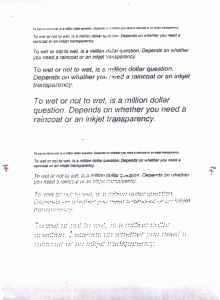When I joined the National Chemical Laboratory, Pune, from the Indian Institute of Science, Bangalore, I should have been bitter. I had to move on. I must say that I should have heeded CNR’s advice and stayed on at IISc. I was taught by my Tamil friends in Madras that a Tiger never runs away. For a Bengali tamilian like me I had no choice to move on.
National Chemical Laboratory had a very good publication record before one Director decided there was no space for non-applied work which left to an exodus of those who had delivered at high levels. One of them was a lady, Dr. Kulkarni (already a retired scientist when I joined), who was associated with two publications in nature. One of these was from a group which was headed for a short while by one Dr. Katti, by all accounts a good experimentalist. They were asked by the then Director, Mashelkar, to work on control of water-vapour evaporation from large water reservoirs. The group failed to deliver despite promising in-lab tests. Mashelkar asked me to wind up the group.
I did an exhaustive literature survey on my own, wrote a document to put down my thoughts on the problem. I decided to work on Langmuir Blodgett films. Instead of making films with fatty acids I decided to work with fatty amines.
Among the group members, there was a D. V. Paranjape, a no-nonsense and straightforward man, who had a Master’s degree in science. He did his experiments well and much better than most of his Ph. D. colleagues or seniors or Ph. D. students. He, in my opinion, was the anchor of the group because I relied on his work which was reproducible. There were others such as Sathye, Chaudhary and Patil who together formed a good company and worked well and were upright and honest and proud (a rare commodity). They did credit to their erstwhile leader of the group, Mr. Katti.
We did various things well until I inadvertently made a mistake. But I will come to that later.
For the present, I will present something of which I am proud. This was before we could make computer power-point presentations and we required transparencies for overhead projections on which we could print from a computer. These sheets were essentially hydrophobic so that it was not wetted by printing ink. We found a method of depositing a thin oxide film from the air-water interface on the transparency sheet to make it hydrophilic and then print on them. The transparency sheets were imported and costly. It occurred to me that maybe we could “import substitute” using a cheap method.
Paranjape did the experiment (it required considerable skill) because we had no equipment. We used Langmuir’s floating thread method to deposit what we thought at that time to be a multilayer of a fatty amine salt of titanyl oxalate on the transparency up to a certain point (marked by an arrow in the figure).
We did the printing on Murali Sastry’s computer. I think it was Sastry who coined the content of the text. As one can see it turned out quite well. This particular transparency has been with me since that time (nearly 15 years) and it has survived fifteen years robustly in my files.
